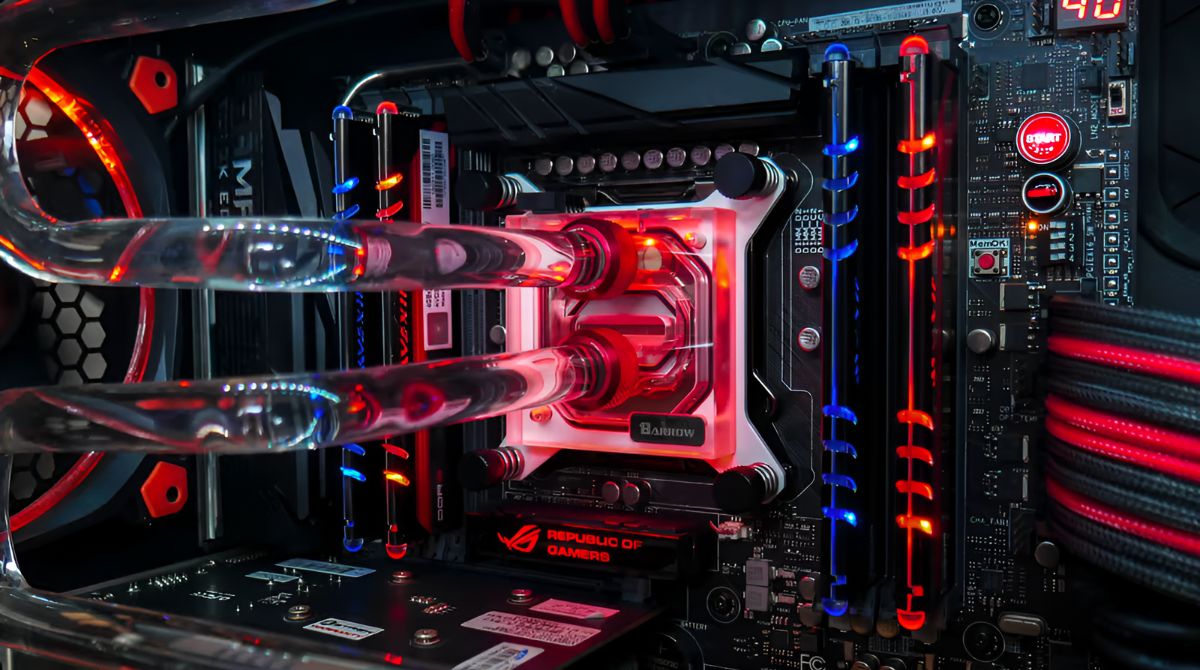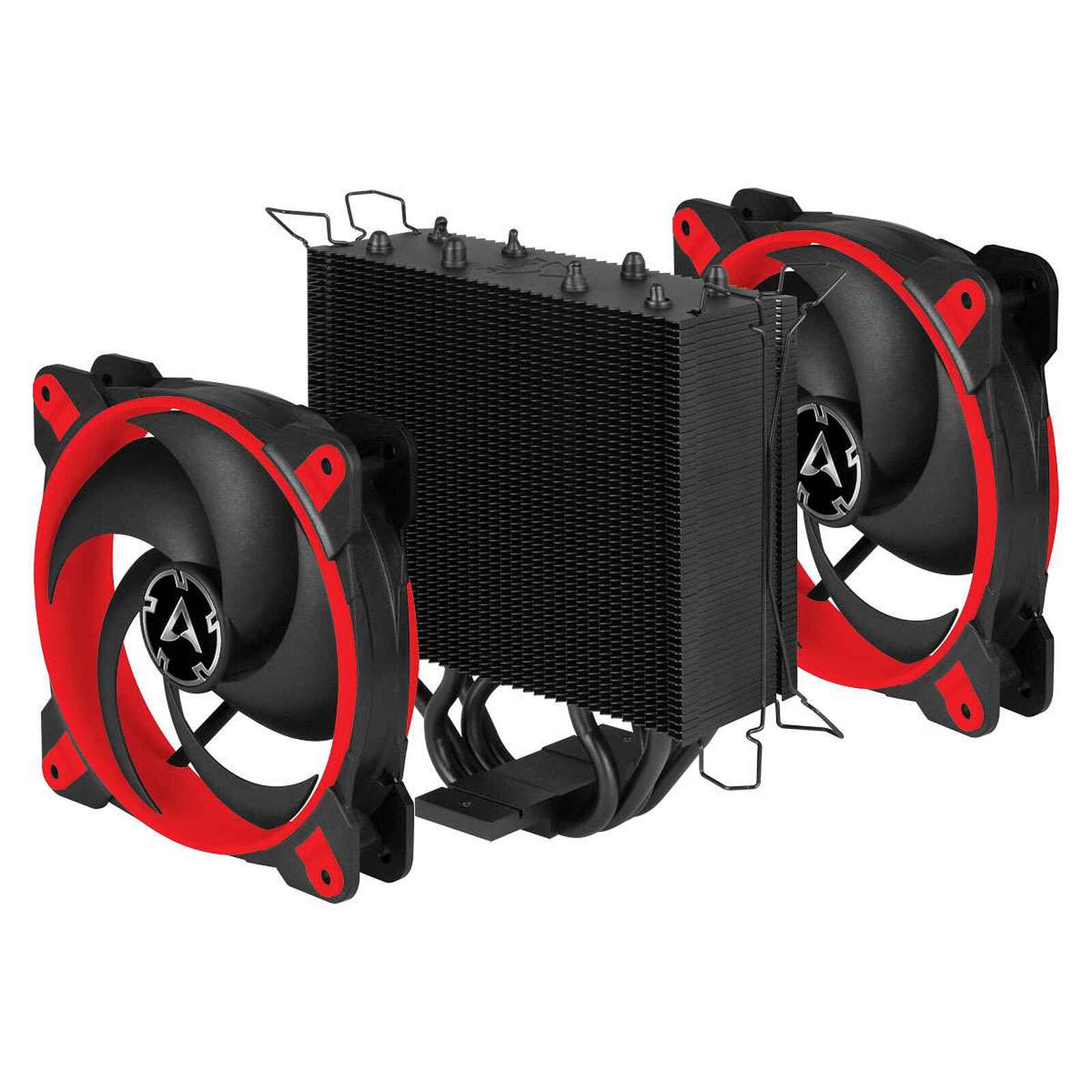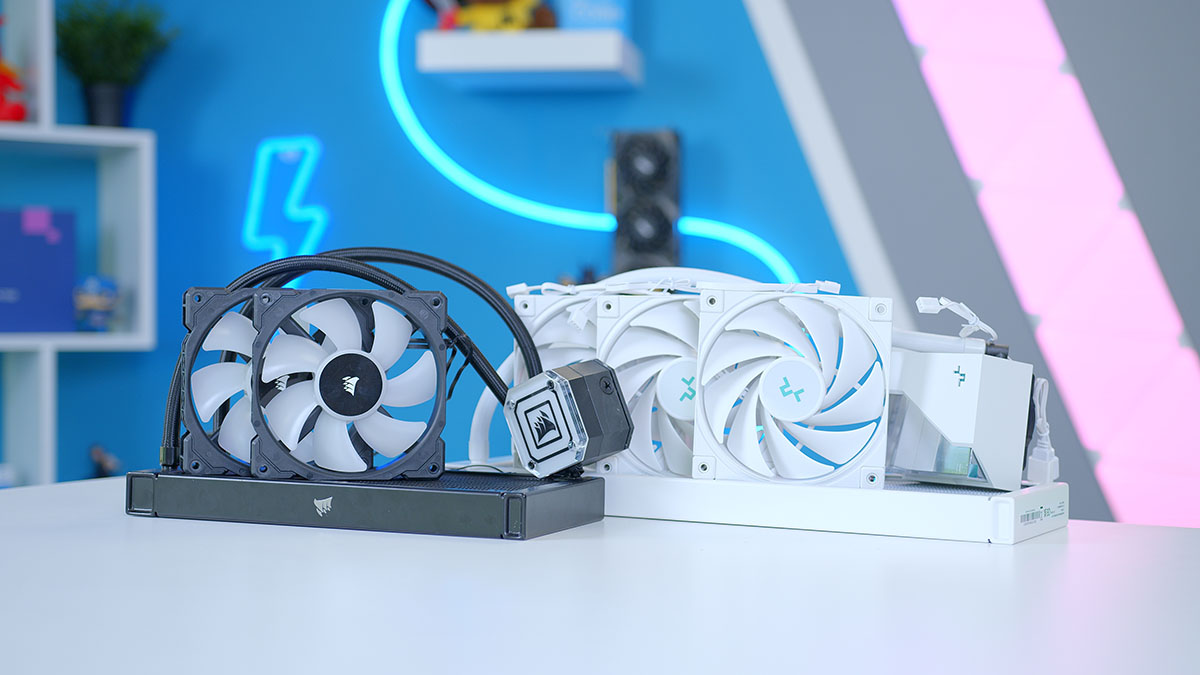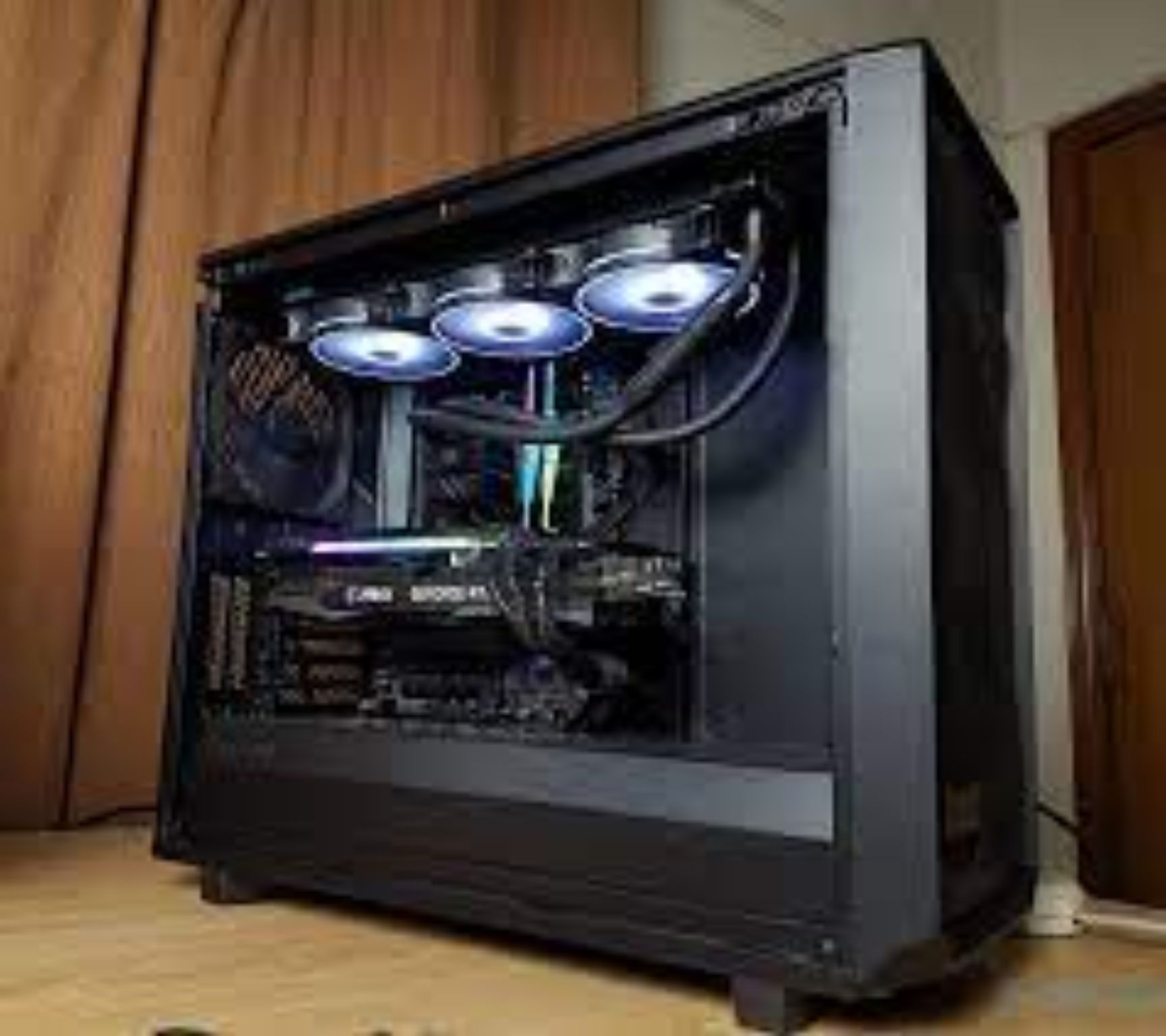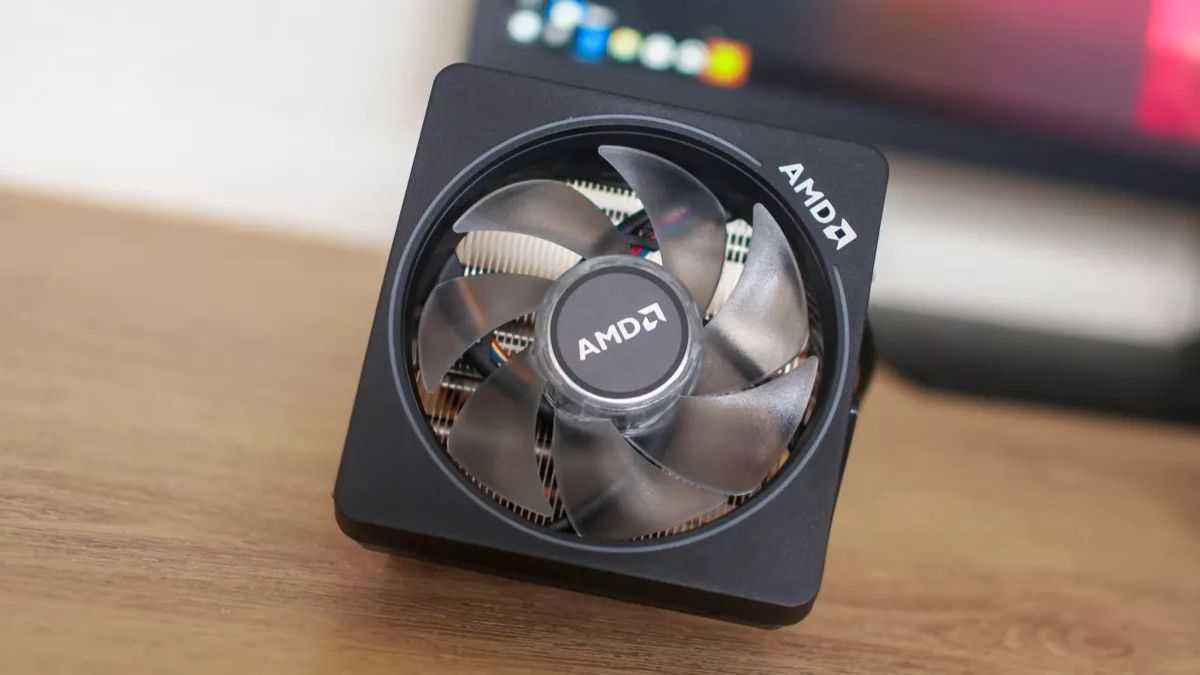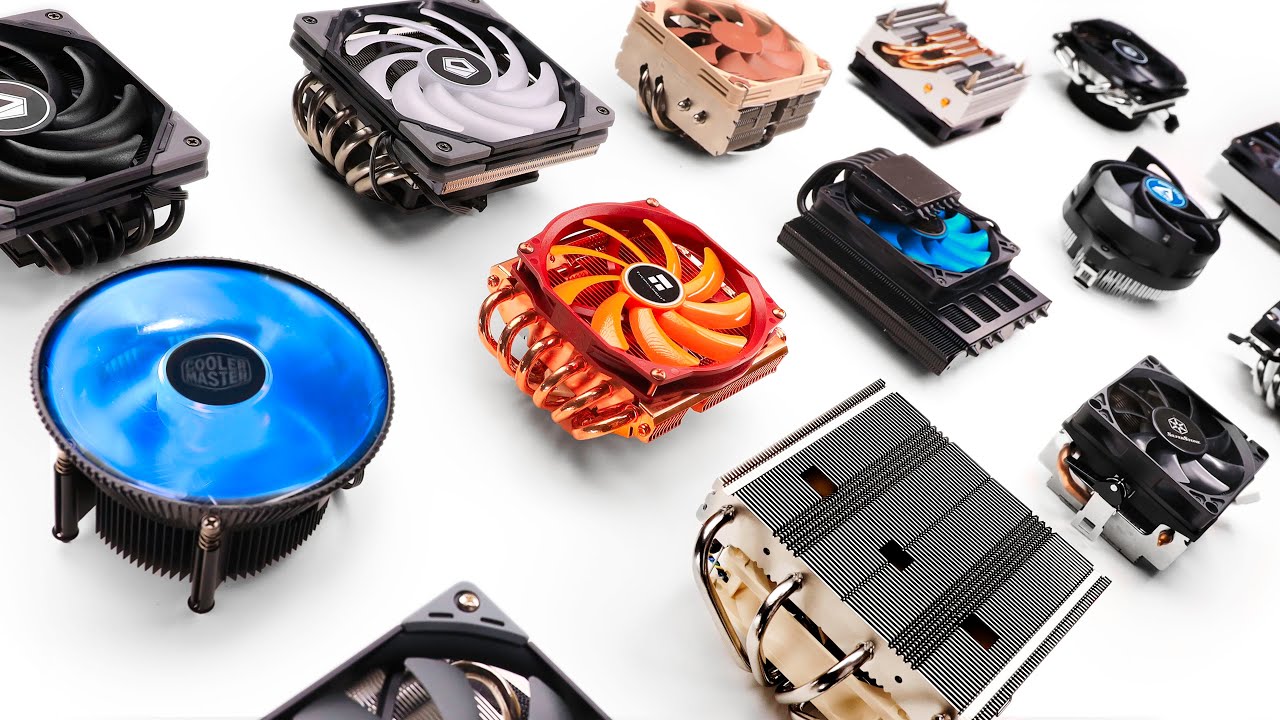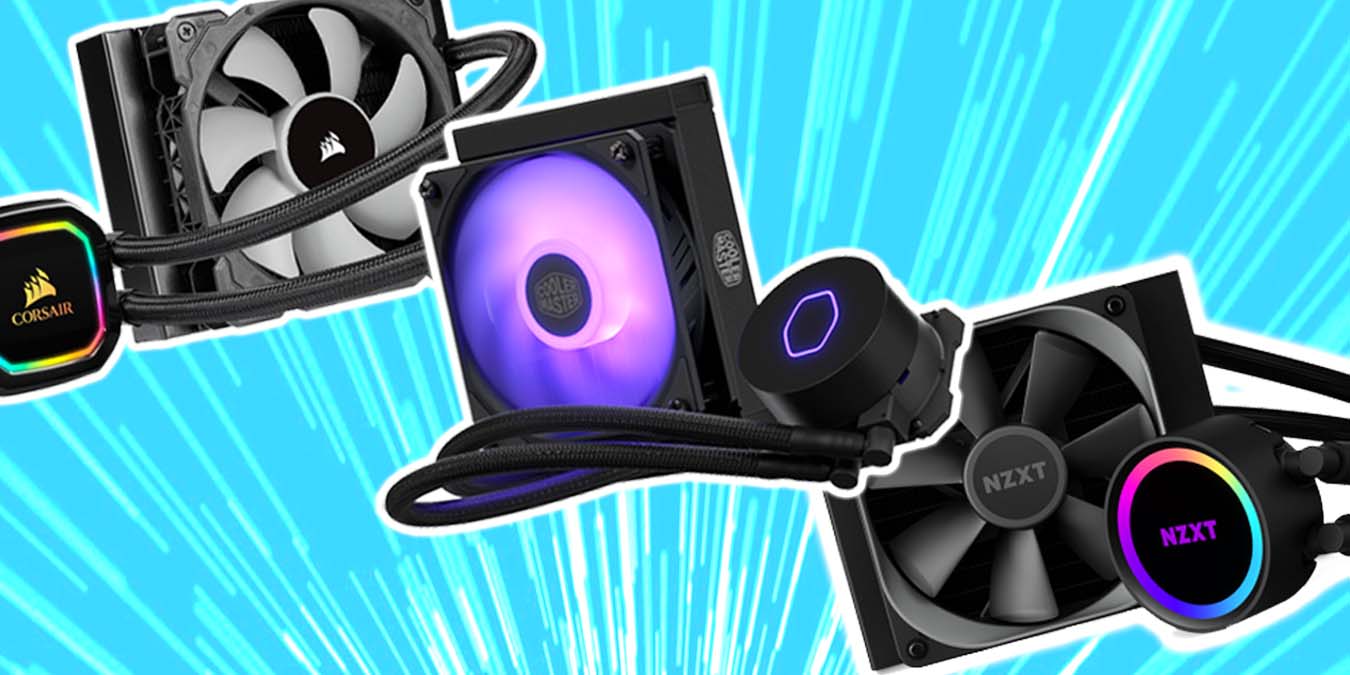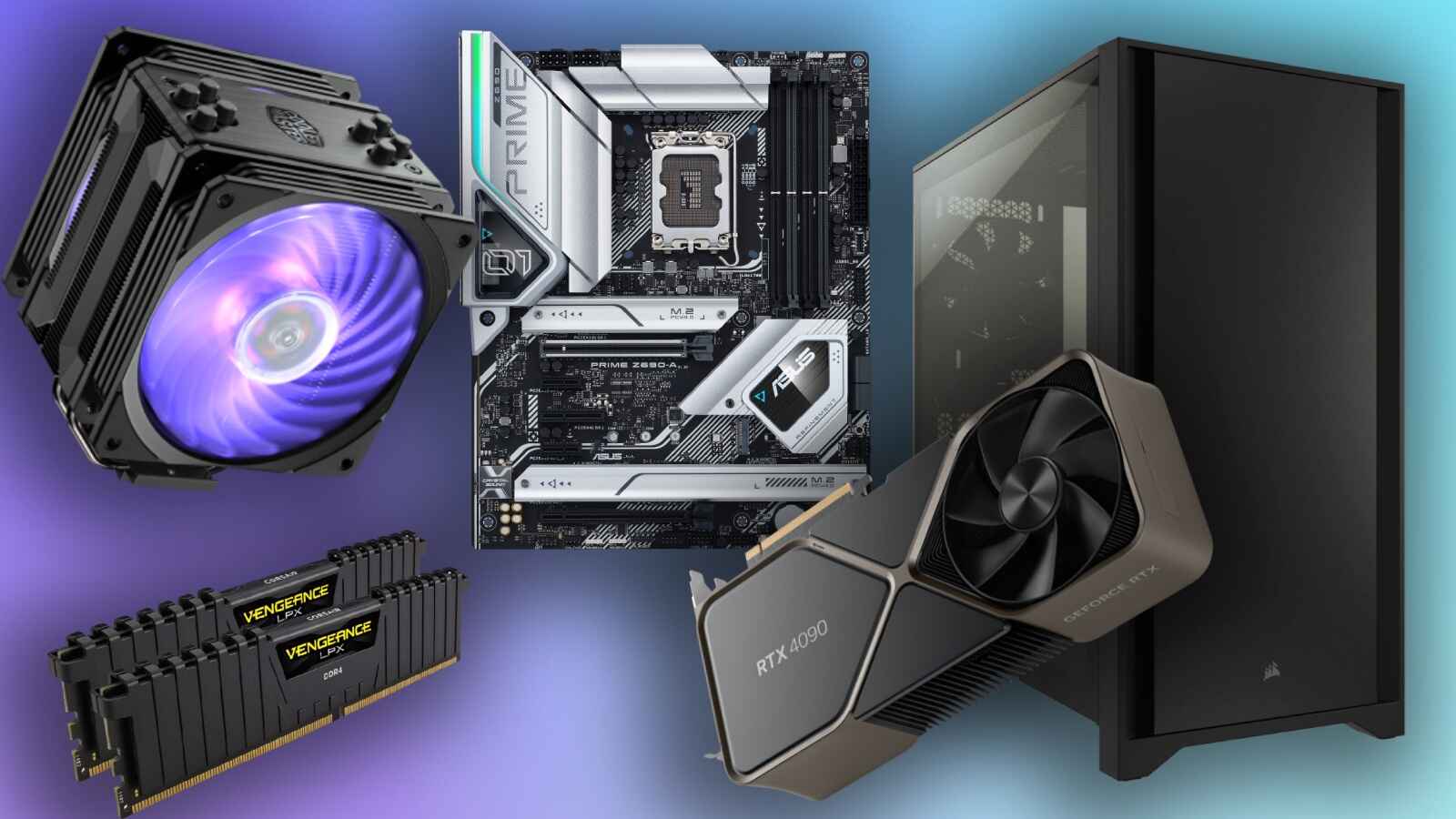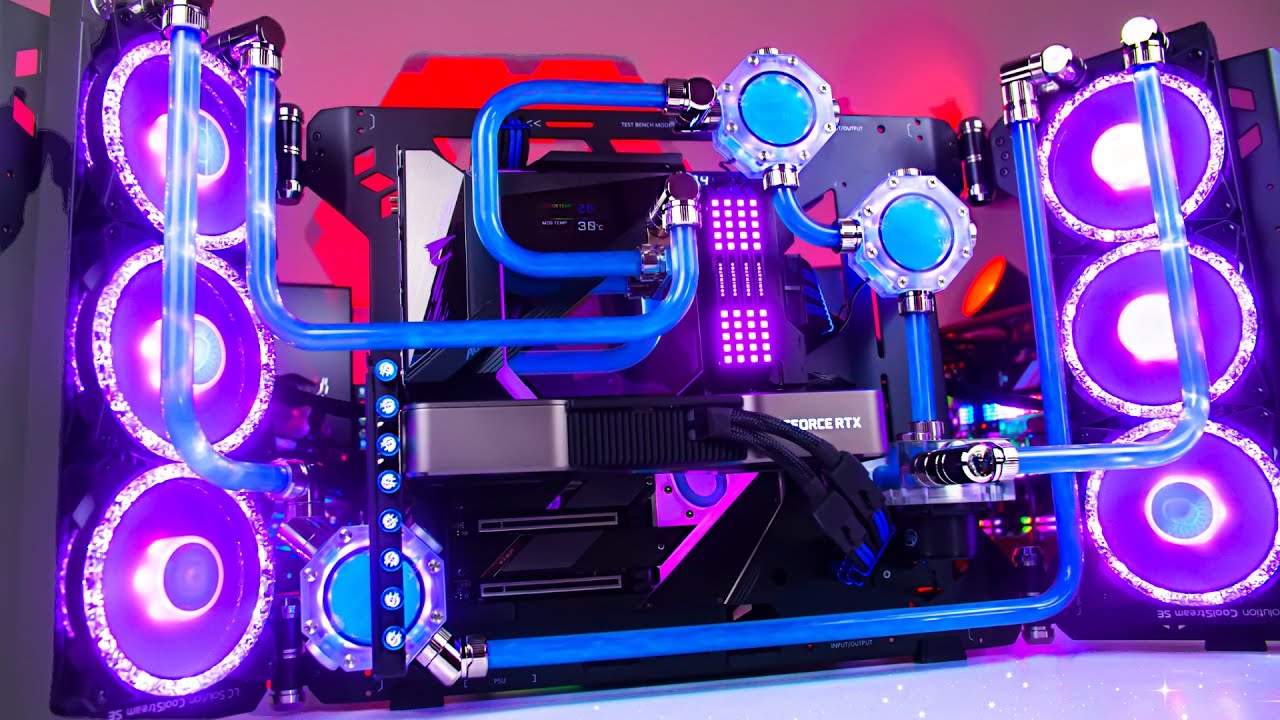Introduction
A central processing unit (CPU) is the brain of a computer, constantly processing and executing tasks. As the CPU works, it generates a significant amount of heat, which can lead to reduced performance, system instability, and even hardware damage if not properly managed. To prevent this, CPUs are equipped with cooling systems to dissipate the heat generated during operation.
One type of CPU cooling solution gaining popularity in recent years is liquid cooling. While traditional air coolers use fans to dissipate heat, liquid CPU coolers offer a more efficient and effective solution. With their use of liquid coolant, they can provide superior cooling performance, especially for high-performance PCs used in demanding applications such as gaming, video editing, and 3D rendering.
In this article, we will delve into the workings of liquid CPU coolers, exploring their components and how they operate to keep the CPU temperature in check. We will also highlight the advantages they offer over traditional air cooling. So, let’s dive in and discover how liquid CPU coolers work and why they are becoming increasingly popular in the world of computer cooling.
The Basics of CPU Cooling
Before we explore the specifics of liquid CPU cooling, let’s first understand the fundamental concept of CPU cooling. Every CPU generates heat as it operates, and to maintain optimal performance and prevent damage, this heat must be dissipated.
Traditional air cooling methods involve the use of a heatsink and fan combination. The heatsink is in direct contact with the CPU, and the fan blows air across the heatsink to dissipate the heat. While this method is widely used and effective for most computer systems, it does have limitations.
One limitation is the size and design of the heatsink, which can restrict airflow and contribute to higher temperatures. Additionally, as CPUs continue to become more powerful, they generate more heat, requiring more robust cooling solutions.
This is where liquid cooling comes into play. Unlike air coolers, liquid CPU coolers use a closed loop system that involves pumping liquid coolant to transport heat away from the CPU. By utilizing the superior thermal properties of liquid, such as higher heat capacity and thermal conductivity, liquid CPU coolers offer improved cooling efficiency.
It’s important to note that liquid CPU coolers are typically more expensive than air coolers and require installation expertise. However, the benefits they provide in terms of cooling performance and overall system stability make them an attractive option for enthusiasts and users with demanding cooling requirements.
What is a Liquid CPU Cooler?
A liquid CPU cooler, often referred to as an all-in-one (AIO) cooler, is a cooling solution specifically designed for CPUs. It consists of several key components that work together to dissipate the heat generated by the CPU more efficiently than traditional air cooling methods.
One of the main components of a liquid CPU cooler is the pump, which is responsible for circulating the liquid coolant. Unlike the natural convection process used in air coolers, liquid coolers actively move the coolant through the system to improve heat transfer.
The coolant transported by the pump flows through a radiator, which is another critical component. The radiator is responsible for dissipating the heat absorbed by the coolant. It consists of a series of thin, metal fins that allow heat to be transferred to the surrounding air, aided by fans that blow air across the radiator.
In addition to the pump and radiator, liquid CPU coolers also feature a cold plate. The cold plate is a flat metal block, often made of copper or aluminum, that is in direct contact with the CPU. Its purpose is to efficiently transfer heat from the CPU to the liquid coolant.
These components, combined with tubes that connect them, create a closed-loop system. The liquid coolant travels from the pump to the cold plate, absorbing heat from the CPU. It then flows through the tubes to the radiator, where the heat is released into the surrounding environment. Finally, the cooled coolant returns to the pump to begin the cycle anew.
It’s worth noting that liquid CPU coolers come in various configurations, including single-fan AIO coolers and dual-fan or even triple-fan models for better cooling capacity. Some high-end liquid coolers also offer customizable RGB lighting features, providing an aesthetic appeal along with superior cooling performance.
In the next section, we’ll explore the inner workings of a liquid CPU cooler and delve into the steps involved in cooling a CPU.
Components of a Liquid CPU Cooler
A liquid CPU cooler consists of several essential components that work together to effectively cool the CPU. Understanding these components will give us a clearer picture of how a liquid CPU cooler operates.
1. The Pump: The pump is the heart of the liquid CPU cooler. It is responsible for circulating the liquid coolant throughout the system. Typically located near the radiator or on the CPU block, the pump ensures a continuous flow of coolant, maximizing heat transfer efficiency.
2. The Radiator: The radiator is crucial for dissipating heat. It features a series of thin metal fins that allow heat from the coolant to be transferred to the surrounding air. The radiator is typically equipped with one or more fans that blow air across the fins, enhancing the cooling process.
3. The Fans: Fans play a vital role in liquid CPU cooling. They are mounted on the radiator and are responsible for drawing air through the fins to facilitate heat dissipation. The fans can be adjustable in terms of speed and are often designed to provide efficient cooling while maintaining a low noise level.
4. The Cold Plate: The cold plate, also known as the CPU block, is a flat metal block typically made of copper or aluminum. It is in direct contact with the CPU surface and is designed to efficiently transfer heat from the CPU to the liquid coolant.
5. The Tubes: Connecting all the components together are tubes that transport the liquid coolant. These tubes are usually made of flexible and durable materials such as rubber or reinforced plastic. They ensure the smooth flow of coolant between the pump, radiator, and cold plate.
6. The Coolant: The coolant, often a mixture of water and additives, plays a crucial role in liquid CPU cooling. It absorbs heat from the CPU through the cold plate and carries it to the radiator for dissipation. The choice of coolant can have an impact on cooling performance and longevity.
These components work together in a closed-loop system, creating a continuous cycle of heat transfer and cooling. In the next section, we will explore the step-by-step process of how a liquid CPU cooler cools the CPU.
The Pump
The pump is a vital component of a liquid CPU cooler, responsible for the circulation of the coolant throughout the system. Its main purpose is to ensure a continuous flow of coolant, facilitating the transfer of heat away from the CPU.
Typically located near the radiator or on the CPU block, the pump is powered by a motor that drives the movement of the coolant. The pump’s design and construction are optimized for maximum efficiency and reliability.
The pump consists of several key elements, including an impeller and a motor. The impeller, often made of durable materials like ceramic or plastic, is responsible for pushing the coolant through the system. Driven by the motor, the impeller rotates and creates pressure that propels the coolant forward.
Most modern liquid CPU coolers utilize a centrifugal pump design. This type of pump uses a rotating impeller to draw coolant from the reservoir and force it into the other components of the cooler. Centrifugal pumps are known for their efficiency and reliability, making them ideal for liquid CPU cooling systems.
In addition to its primary function of circulating coolant, the pump also plays a role in ensuring optimal system performance. By facilitating the continuous flow of coolant, the pump helps maintain consistent cooling, preventing the CPU from overheating and potentially avoiding performance throttling.
It’s worth noting that some liquid CPU coolers offer additional features related to pump control. These include pump speed adjustment options or customizable RGB lighting effects. Such features allow users to fine-tune the cooling performance and aesthetics of their system.
Overall, the pump is a critical component in a liquid CPU cooling system, responsible for the efficient circulation of the coolant. Without an effective pump, the cooling performance of the liquid CPU cooler would be compromised, leading to inadequate heat dissipation.
In the next section, we will explore another key component of liquid CPU coolers: the radiator.
The Radiator
The radiator is a crucial component of a liquid CPU cooler, responsible for dissipating the heat absorbed by the coolant. It plays a vital role in maintaining efficient cooling and preventing the CPU from overheating.
The radiator is typically made of thin metal fins arranged in a grid-like pattern. These fins provide a large surface area for heat transfer. The most commonly used metals for radiator construction are aluminum and copper, both known for their excellent thermal conductivity.
When the heated coolant flows into the radiator, it passes through the network of thin fins. As it does, the heat from the coolant is transferred to the fins. Simultaneously, fans mounted on the radiator blow air across the fins, facilitating the dissipation of heat into the surrounding environment.
The effectiveness of a radiator is determined by multiple factors, including the number and thickness of the fins, the density of the fin arrangement, and the size of the radiator overall. These factors impact the radiator’s ability to transfer heat efficiently and determine its cooling capacity.
Many liquid CPU coolers come equipped with fans attached to the radiator. These fans help enhance the cooling process by increasing airflow over the fins. They are designed to operate quietly while providing sufficient air pressure to ensure optimal heat dissipation.
Radiator size and configuration can vary depending on the specific cooling requirements and form factor of your system. Larger radiators generally provide better cooling performance due to their increased surface area and improved airflow. Dual-fan and triple-fan radiator configurations offer even greater cooling capacity.
Some liquid CPU coolers also offer the option for customizable fan speed control, allowing users to fine-tune cooling performance based on their preferences or specific system needs. This flexibility makes it possible to strike a balance between cooling efficiency and noise levels.
In summary, the radiator is an essential component of a liquid CPU cooler, responsible for transferring heat from the coolant to the surrounding air. By optimizing its design, size, and fan configuration, the radiator plays a vital role in maintaining efficient cooling and ensuring the longevity of the CPU.
In the next section, we will delve into the role of fans in liquid CPU cooling.
The Fans
Fans are a crucial component of a liquid CPU cooler, working in conjunction with the radiator to enhance heat dissipation and maintain optimal cooling performance. They play a vital role in keeping the CPU temperature in check and preventing overheating.
The fans in a liquid CPU cooler are typically mounted on the radiator. Their primary function is to draw air through the fins of the radiator, facilitating the transfer of heat from the coolant to the surrounding environment.
The design and performance of the fans have a significant impact on cooling efficiency. Ideally, fans should operate quietly while delivering sufficient airflow to remove heat effectively. They are usually optimized to achieve a balance between airflow and static pressure, ensuring efficient cooling performance.
The fan speed, measured in rotations per minute (RPM), directly influences the amount of airflow generated. Higher RPMs result in increased airflow but tend to produce more noise. Many liquid CPU coolers allow users to adjust the fan speed, striking a balance between cooling performance and noise levels.
The number of fans used in a liquid CPU cooler varies depending on the radiator size and capacity. Single-fan configurations are common in smaller coolers, while larger coolers may feature dual-fan or even triple-fan setups. Multiple fans increase the airflow and improve heat dissipation.
Furthermore, fans in liquid CPU coolers often utilize advanced technologies to enhance performance. This includes features such as fan blade design, bearing types, and noise cancellation mechanisms. These technologies help to improve airflow, reduce noise levels, and increase the overall lifespan of the fans.
It’s important to note that the position and orientation of the fans can also impact cooling performance. Push configurations have fans mounted on the inside of the radiator, pushing air through the fins, while pull configurations have fans mounted on the outside, pulling air across the fins. Some setups even utilize a combination of push and pull for optimal cooling performance.
In summary, fans are a critical component of a liquid CPU cooler, working together with the radiator to enhance heat dissipation. By delivering efficient airflow and operating at appropriate speeds, fans ensure the CPU remains cool and prevents performance degradation or damage due to overheating.
In the next section, we will discuss the role of the cold plate in liquid CPU cooling.
The Cold Plate
The cold plate, also known as the CPU block, is a crucial component of a liquid CPU cooler. It is responsible for efficiently transferring heat from the CPU to the liquid coolant, playing a vital role in the cooling process.
The cold plate is typically made of metal, such as copper or aluminum, due to their excellent thermal conductivity properties. Its construction is designed to maximize contact with the CPU surface, ensuring efficient heat transfer.
One side of the cold plate is in direct contact with the CPU’s integrated heat spreader (IHS). The surface of the IHS and the cold plate are often smoothed and sometimes even polished to improve thermal contact and minimize any air gaps between them.
When the CPU operates, it generates heat that is conducted through the IHS and transferred to the cold plate. The cold plate then acts as a bridge, transferring the heat from the CPU to the liquid coolant flowing through it.
The liquid coolant absorbs the heat from the cold plate’s surface, becoming warmer in the process. This heated coolant then flows through the tubes, carrying the heat away from the CPU and towards the radiator, where it is ultimately dissipated.
To enhance the thermal conduction between the CPU and the cold plate, thermal paste or thermal pads are often applied. These materials help to fill any microscopic gaps between the two surfaces, improving heat transfer efficiency.
The design of the cold plate can vary among different liquid CPU coolers. Some cold plates feature a smooth, flat surface, while others incorporate a series of ridges or microchannels. These design variations aim to increase the surface area and turbulence, enhancing the heat transfer efficiency between the CPU and the coolant.
Overall, the cold plate is a critical component in a liquid CPU cooler, responsible for efficiently transferring the CPU’s heat to the liquid coolant. Its design, material, and thermal contact with the CPU play significant roles in determining the overall cooling performance of the liquid CPU cooler.
In the next section, we will explore the step-by-step process of how a liquid CPU cooler works to cool the CPU.
How Does a Liquid CPU Cooler Work?
Understanding how a liquid CPU cooler works can help us appreciate its effectiveness in maintaining optimal CPU temperatures. The process involves several steps, each contributing to efficient heat dissipation and cooling performance.
Step 1: Heat Transfer
The first step in the process is heat transfer. The CPU generates heat as it operates, and this heat is conducted through the integrated heat spreader (IHS) and transferred to the cold plate of the liquid cooler.
Step 2: Pumping the Coolant
Once the heat is transferred to the cold plate, the liquid coolant, typically a mixture of water and additives, is pumped through the cold plate. The pump, powered by a motor, moves the coolant through the system in a continuous loop.
Step 3: Cooling in the Radiator
The heated coolant then flows from the cold plate to the radiator. The radiator consists of thin metal fins that maximize heat dissipation. As the coolant passes through the radiator, the heat is transferred to the surrounding air.
Step 4: Circulating the Coolant
After cooling in the radiator, the now cooler coolant returns to the pump through tubes, ready to begin the cycle anew. This continuous circulation of the coolant ensures a consistent flow of heat away from the CPU.
Step 5: Cooling the CPU
The cooled liquid coolant is then pumped back to the cold plate, where it absorbs heat from the CPU once again. This process repeats, continuously transferring the CPU’s heat to the coolant and effectively cooling the CPU.
By utilizing liquid coolant and an optimized cooling system, liquid CPU coolers offer several advantages over traditional air coolers. They provide improved cooling efficiency, enabling CPUs to operate at lower temperatures even under heavy workloads.
Additionally, liquid CPU coolers tend to generate less noise compared to their air cooling counterparts. The use of larger radiators and multiple fans also allows for better heat dissipation and increased cooling capacity, enhancing system stability.
Overall, liquid CPU coolers rely on the principles of heat transfer and fluid dynamics to efficiently dissipate heat from the CPU. By continuously circulating liquid coolant and utilizing components like the pump, radiator, fans, and cold plate, they provide superior cooling performance and help maintain optimal CPU temperatures.
In the next section, we will explore the advantages that liquid CPU coolers offer over traditional air cooling methods.
Step 1: Heat Transfer
The first step in the process of how a liquid CPU cooler works is heat transfer. The CPU, as it operates, generates heat due to the millions of electronic components working together. This heat needs to be efficiently transferred away from the CPU to prevent overheating and ensure optimal performance.
Heat transfer from the CPU to the liquid cooler begins with the integrated heat spreader (IHS). The IHS, a metal plate located on top of the CPU die, acts as a conductor between the CPU and the cooling solution.
As the CPU generates heat, this thermal energy conducts through the CPU package and reaches the IHS. The IHS spreads the heat across its surface, allowing for more even distribution of thermal energy.
Once the heat reaches the IHS, it is then transferred to the cold plate of the liquid CPU cooler. The cold plate is in direct contact with the IHS, often using thermal paste or thermal pads to improve thermal conductivity and ensure efficient heat transfer.
The cold plate plays a critical role in this process. It is usually made of metal, such as copper or aluminum, due to their high thermal conductivity. These metals allow for effective heat conduction from the CPU to the liquid coolant.
By maximizing the surface area in contact with the CPU, the cold plate provides a pathway for the thermal energy to transfer efficiently. The thermal conductivity of the cold plate material facilitates the quick transfer of heat to the liquid coolant flowing through it.
Efficient heat transfer in this step ensures that the CPU’s thermal energy is effectively moved away from the heat source, paving the way for the subsequent steps in the liquid CPU cooling process.
In the next step, we will explore the role of the pump in circulating the coolant within the liquid CPU cooler.
Step 2: Pumping the Coolant
Once the heat from the CPU has been transferred to the cold plate, the liquid CPU cooler enters the second step: pumping the coolant. The pump, a vital component of the liquid cooling system, is responsible for circulating the liquid coolant throughout the cooler.
The pump is typically located near the radiator or on the CPU block. It is powered by a motor that drives the movement of the coolant through the system. The design and construction of the pump are optimized for reliable and efficient operation.
When the pump is activated, it propels the liquid coolant from the reservoir through tubes to the cold plate. The movement of the coolant is necessary to maintain a continuous flow and enable the transfer of heat away from the CPU.
In a typical pump design, an impeller is used to create flow and pressure within the liquid coolant. It rotates rapidly, drawing the coolant in and pushing it through the system. The impeller is often made of durable materials like ceramic or plastic to withstand the demands of continuous operation.
As the impeller spins, it generates pressure within the liquid coolant, forcing it to move through the system. The pump’s motor provides the necessary power to drive the impeller’s movement and maintain the circulation of the coolant.
The primary function of the pump is to ensure a consistent and efficient flow of the liquid coolant. By actively moving the coolant, the pump enhances heat transfer and allows for faster removal of thermal energy from the CPU.
It’s important to note that the pump’s performance can vary among different liquid CPU coolers. Factors such as pump speed, flow rate, and overall efficiency impact cooling effectiveness. Some liquid CPU coolers offer the ability to adjust the pump speed, allowing users to fine-tune the cooling performance based on their requirements.
In the next step, we will explore how the liquid coolant is cooled in the radiator, an integral part of the liquid CPU cooling system.
Step 3: Cooling in the Radiator
After the liquid coolant has absorbed the heat from the CPU at the cold plate, the next step in the liquid CPU cooling process is cooling in the radiator. The radiator plays a crucial role in dissipating the heat from the coolant and transferring it to the surrounding air.
A radiator consists of a network of thin metal fins that provide a large surface area. The heated liquid coolant flows through tubes or channels in the radiator, bringing the thermal energy to the fins.
As the hot liquid coolant passes through the radiator, the heat from the coolant is transferred to the fins. This process occurs through thermal conduction, as the heated coolant comes into direct contact with the metal fins.
With a larger surface area exposed to the air, the heat rapidly dissipates across the fins. The fins also help to increase the contact area between the coolant and the air, facilitating efficient heat transfer.
To further enhance the cooling process, fans are typically mounted on the radiator. These fans blow air through the fins, increasing airflow and speeding up the dissipation of heat. The airflow created by the fans helps carry away the heat from the radiator, allowing for more efficient cooling.
It’s worth noting that the number and size of the fans can vary depending on the specific liquid CPU cooler configuration. Larger coolers often feature dual-fan or even triple-fan setups, maximizing airflow and improving cooling performance.
The combination of the radiator’s design, the metal fins, and the airflow generated by the fans work together to effectively cool the liquid coolant. By transferring heat from the coolant to the surrounding air, the radiator ensures that the heated coolant returns to the pump significantly cooled down, ready to repeat the cooling process.
In the next step, we will explore how the liquid coolant is efficiently circulated throughout the liquid CPU cooling system.
Step 4: Circulating the Coolant
Once the liquid coolant has been cooled in the radiator, the next step in the liquid CPU cooling process is the circulation of the coolant. Efficient circulation ensures that the cooled coolant is continually supplied to the CPU to maintain optimal cooling performance.
After being cooled in the radiator, the now cooler liquid coolant flows back into the pump. The pump, powered by a motor, propels the coolant through the tubes and back to the cold plate to repeat the cooling cycle.
The tubes used in liquid CPU coolers are typically made of flexible and durable materials like rubber or reinforced plastic. They provide a path for the coolant, connecting the cold plate, pump, and radiator in a closed-loop system.
As the pump drives the coolant, it maintains a steady flow, ensuring that a fresh supply of cooled coolant is continuously brought to the CPU. This movement of the liquid coolant enables efficient heat transfer from the CPU to the coolant.
The continuous circulation of the coolant is essential to maintain consistent cooling performance. It helps to remove the heat generated by the CPU and carry it away from the CPU package.
Without efficient coolant circulation, heat could build up around the CPU, increasing the risk of overheating and potential performance issues. The continuous flow of coolant, facilitated by the pump and controlled by the cooling system, prevents the CPU from reaching dangerous temperatures.
The liquid CPU cooling system, with its closed-loop circulation, ensures that the coolant continuously passes through the radiator to be cooled and then returns to the pump as a cooled liquid ready for another round of heat dissipation.
In the next step, we will explore how the cooled coolant effectively cools the CPU, maintaining its temperature within safe limits.
Step 5: Cooling the CPU
After the liquid coolant has circulated through the system and been cooled, it is time for the final step in the liquid CPU cooling process: cooling the CPU itself.
As the cooled liquid coolant flows back to the cold plate, it once again comes into contact with the CPU’s integrated heat spreader (IHS). The IHS acts as a conductor, facilitating the transfer of heat from the CPU to the liquid coolant.
When the CPU is in operation, it generates heat due to the electrical activity of its components. This heat is conducted through the IHS and transferred to the cold plate, aided by thermal paste or pads applied between the IHS and the cold plate to enhance thermal conductivity.
The cold plate, made of materials like copper or aluminum with high thermal conductivity, efficiently absorbs the heat from the CPU. Through this direct contact, the cold plate quickly conducts the thermal energy to the liquid coolant passing through it.
The now heated liquid coolant carries the heat away from the CPU as it continues to circulate. It travels through the tubes, back to the radiator, where the heat is dissipated into the surrounding air through thermal conduction and forced airflow from the fans.
By effectively removing the heat generated by the CPU, the liquid CPU cooler helps maintain the CPU’s temperature within safe operating limits. This temperature control is essential for preventing performance degradation, system instability, and potentially irreversible damage to the CPU.
As long as there is a continuous flow of cooled liquid coolant, facilitated by the pump and regulated by the cooling system, the CPU remains cool and can operate optimally, especially under heavy workloads or demanding applications.
The liquid CPU cooling system’s ability to efficiently cool the CPU during sustained operation provides significant advantages over traditional air cooling. It enables users to push the limits of their CPUs, maximizing performance while maintaining stability and preventing overheating-related issues.
In the next section, we will explore the advantages that liquid CPU cooling systems offer over traditional air cooling methods.
Advantages of Liquid CPU Cooling
Liquid CPU cooling systems offer several advantages over traditional air cooling methods. These advantages make them a popular choice for users who require superior cooling performance, especially in high-performance computing and gaming systems. Let’s explore some of the key benefits of liquid CPU cooling:
Improved Cooling Efficiency
Liquid cooling systems excel in dissipating heat efficiently. The use of liquid coolant, which has a higher thermal capacity and conductivity than air, allows for more effective heat transfer from the CPU to the coolant. This results in lower CPU temperatures, better thermal management, and improved overall system stability.
Reduced Noise Levels
Liquid CPU coolers are generally quieter than traditional air coolers. While air coolers rely on fans to dissipate heat, liquid coolers utilize larger radiators and slower-running fans. This combination results in reduced noise levels, providing a quieter computing experience. Users can enjoy a more peaceful environment without compromising on cooling performance.
Enhanced Overclocking Capabilities
Liquid CPU coolers are particularly beneficial for users who want to push the limits of their CPUs through overclocking. By efficiently dissipating heat, liquid coolers allow for more stable and lower temperature operation. This enables users to achieve higher clock speeds, increased performance, and longer-lasting hardware without encountering overheating issues.
Compact Form Factor
Liquid CPU coolers often have a compact design compared to bulkier air coolers, making them a suitable choice for small form factor systems. The flexibility of liquid coolers, with their flexible tubing and compact radiator sizes, allows for better compatibility with a wide range of computer cases.
Aesthetic Appeal
Many liquid CPU coolers offer customizable RGB lighting options, allowing users to personalize their system’s aesthetics. With vibrant lighting effects and stylish designs, liquid coolers can enhance the visual appeal of a PC build, creating a more immersive and visually pleasing experience.
Overall, the advantages of liquid CPU cooling, including improved cooling efficiency, reduced noise levels, enhanced overclocking capabilities, compact form factors, and aesthetic appeal, make them an attractive choice for users who demand efficient and reliable cooling solutions for their high-performance computing systems.
Improved Cooling Efficiency
One of the significant advantages of liquid CPU cooling systems over traditional air cooling methods is their improved cooling efficiency. Liquid coolers are specifically designed to excel in dissipating heat effectively, ensuring optimal CPU temperatures and better overall system performance. Let’s explore why liquid CPU coolers offer improved cooling efficiency:
1. Efficient Heat Transfer: Liquid coolers utilize a liquid coolant, such as a mixture of water and additives, to transfer heat away from the CPU. Liquid has higher thermal capacity and conductivity compared to air, allowing for more effective heat transfer from the CPU to the coolant. This results in lower CPU temperatures and helps maintain stable system operation.
2. Larger Surface Area: Liquid coolers often feature larger radiators with a dense arrangement of metal fins. This design provides a substantial surface area for heat dissipation. As the liquid coolant flows through the radiator, the heat absorbed from the CPU is quickly transferred to the metal fins and then to the surrounding air.
3. Enhanced Thermal Management: Efficient cooling is essential for managing thermal energy and preventing CPU overheating. Liquid CPU coolers, with their ability to dissipate heat effectively, ensure that the CPU operates within optimal temperature ranges. This helps minimize the risk of thermal throttling, performance degradation, and potential hardware damage.
4. Continuous Heat Exhaust: Liquid CPU coolers employ a closed-loop system, continuously circulating the liquid coolant through the CPU block, radiator, and back to the pump. This continuous flow ensures a steady removal of heat from the CPU, preventing heat buildup and maintaining consistent cooling performance.
5. Enhanced Cooling Under Heavy Workloads: Liquid coolers excel in providing efficient cooling even under heavy workloads or in demanding applications. When the CPU is pushed to its limits, it generates more heat. Liquid cooling systems can effectively handle the increased thermal load, keeping the CPU temperatures under control and avoiding performance throttling.
6. Effective Coolant Distribution: The liquid coolant is distributed evenly across the cold plate, ensuring uniform heat transfer from the CPU. This helps prevent hotspots and ensures that all areas of the CPU receive adequate cooling, allowing for more efficient and balanced temperature management.
Overall, the improved cooling efficiency of liquid CPU coolers provides significant benefits in terms of overall system performance, stability, and longevity. Whether it’s for demanding gaming setups, overclocked systems, or professional workstations, liquid coolers offer an effective solution to keep CPUs running cool even under intense computational loads.
Reduced Noise Levels
Another notable advantage of liquid CPU cooling systems over traditional air cooling is their ability to reduce noise levels, providing a quieter computing experience. Liquid coolers achieve this by employing larger radiators and fans that operate at lower speeds without compromising on cooling performance. Let’s delve into why liquid CPU coolers offer reduced noise levels:
1. Larger Radiators: Liquid coolers typically feature larger radiators compared to traditional air coolers. The size of the radiator allows for a greater heat dissipation area, which means the fans can run at lower speeds to achieve the same level of cooling efficiency. Lower fan speeds translate to quieter operation.
2. Slower Fan Speeds: Liquid coolers use larger fans that can rotate at slower speeds while delivering sufficient airflow. The reduced rotational speed significantly reduces noise levels compared to smaller and faster-spinning fans used in air coolers. This quieter operation creates a more peaceful computing environment.
3. Noise Dampening Features: Some liquid CPU coolers are designed with noise dampening features. This can include specially designed fan blades, anti-vibration pads, or fan shrouds to minimize vibrations and noise generation. These features contribute to a quieter overall system by reducing unwanted noise caused by fan operation.
4. Fan Control Options: Liquid CPU coolers often provide control options to adjust fan speeds. This gives users the flexibility to find the optimal balance between cooling performance and noise levels according to their specific needs and preferences. Fan speed control allows users to customize the cooling solution to achieve a quieter operation while still maintaining efficient cooling.
5. Noise Isolation: Liquid coolers can help isolate noise generated by the CPU heat sink from the rest of the system. The use of flexible tubing helps reduce vibrations, preventing them from spreading to other components and minimizing noise transmission. This isolation further contributes to a quieter overall system.
By offering reduced noise levels, liquid CPU coolers provide a more enjoyable computing experience, especially for users who prioritize a quiet environment, such as content creators, professionals working in noise-sensitive environments, or individuals who simply prefer a more serene setup.
It is worth noting that while liquid CPU coolers generally have lower noise levels compared to air coolers, the noise level can still vary based on factors like fan speed settings, radiator size, and individual component qualities. However, with proper fan control and the right cooling setup, liquid CPU coolers can significantly minimize noise, resulting in a more peaceful computing environment.
Enhanced Overclocking Capabilities
Liquid CPU cooling systems offer a significant advantage when it comes to overclocking capabilities. Overclocking involves pushing a CPU beyond its stock clock speed to achieve higher performance levels. Liquid coolers play a pivotal role in facilitating successful and efficient overclocking. Let’s explore how:
1. Efficient Heat Dissipation: Overclocking generates more heat as the CPU operates at higher frequencies and voltages. Liquid coolers, with their superior cooling performance, can effectively dissipate the increased heat. This helps maintain stable CPU temperatures, preventing thermal throttling and ensuring reliable performance during demanding tasks.
2. Lower CPU Temperatures: Liquid CPU coolers have the ability to keep CPU temperatures significantly lower compared to traditional air coolers. Lower temperatures allow for more headroom in terms of thermal limitations, enabling users to push their CPUs to higher clock speeds while remaining within safe temperature thresholds.
3. Greater Stability: By maintaining cooler temperatures, liquid coolers enhance the stability of overclocked CPUs. Cooler CPUs are less prone to voltage irregularities and thermal-induced instabilities. This enables users to achieve higher clock speeds and run demanding applications without experiencing crashes or system instability.
4. Longevity: Overclocking increases thermal stress on a CPU. Liquid cooling helps mitigate this stress by maintaining optimal operating temperatures. Cooler temperatures contribute to increased CPU lifespan by reducing the strain on the processor and minimizing the risk of premature hardware degradation.
5. Customizable Cooling: Liquid coolers often provide user-adjustable settings, including fan speed and pump speed controls. These customizable options enable users to fine-tune the cooling system according to their specific overclocking requirements. Users can optimize the cooling solution to strike a balance between performance, noise levels, and thermal management.
6. Enhanced Performance: The improved cooling capabilities of liquid CPU coolers allow users to achieve higher clock speeds, resulting in enhanced overall system performance. Overclocking with a liquid cooler provides users with the opportunity to unleash the full potential of their CPUs, applying their computing power to more demanding tasks and applications.
Overall, liquid CPU coolers prove to be ideal companions for overclocking enthusiasts by enabling more robust and stable performance. With their ability to efficiently dissipate heat, maintain lower temperatures, and provide greater thermal headroom, liquid coolers make it possible to push CPUs to higher clock speeds and experience the full potential of high-performance systems.
Conclusion
Liquid CPU coolers offer superior cooling performance, reduced noise levels, and enhanced overclocking capabilities compared to traditional air cooling methods. These cooling systems utilize liquid coolant to efficiently transfer heat away from the CPU, providing optimal temperature management and maintaining system stability.
By employing components such as the pump, radiator, fans, and cold plate, liquid CPU coolers dissipate heat more effectively, ensuring lower CPU temperatures even under heavy workloads. The use of liquid coolant with its high thermal capacity and conductivity enables efficient heat transfer, resulting in improved overall system performance.
Another advantage of liquid CPU coolers is their reduced noise levels. The larger radiators and slower-running fans contribute to quieter operation, creating a more peaceful computing experience. This makes liquid coolers an ideal choice for users who prioritize a noise-free environment.
Furthermore, liquid CPU coolers provide enhanced overclocking capabilities. With efficient heat dissipation and lower CPU temperatures, users can safely push their CPUs to higher clock speeds. The stability offered by liquid cooling enables reliable performance even during intensive tasks, maximizing system potential.
It’s important to note that liquid CPU coolers come in various configurations and sizes, allowing for compatibility with different computer cases and requirements. Users can choose a cooler that best suits their system build and cooling needs.
In conclusion, liquid CPU coolers offer a range of benefits, including improved cooling efficiency, reduced noise levels, enhanced overclocking capabilities, and customizable options. These advantages make liquid coolers an appealing choice for enthusiasts, gamers, content creators, and professionals who demand reliable and efficient cooling for their high-performance computing systems.







